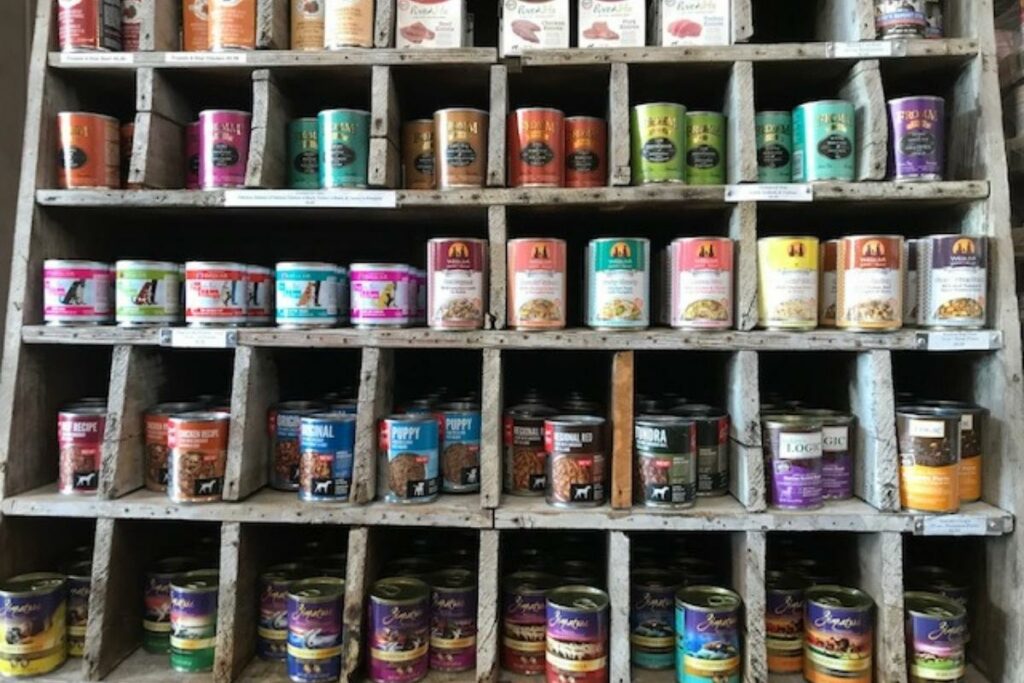“What’s your best dog food?”

By Tina Kuykendall
That’s the question caring pet owners most frequently ask us. And our answer always is, “Feed the best quality food you can afford.”
But what does the best quality mean? The highest protein? The highest meat inclusion? All organic? Grain-free? Kibble? Canned? Raw? There are so many options is easy to see how you could get confused.
One place to start is the ingredient panel on your dog food. The first five ingredients make up the bulk of the recipe. If your food claims to be high in protein but starts with a carbohydrate, you may want to look at some other options.
Let’s start with your dog. Your dog is a wolf. A sweet, loving, cuddly wolf who became domesticated about 15,000 years ago. When wolves are hungry, they don’t go to the cupboard and open a bag of baked kibble. They hunt for moose, deer, fish, amphibians, birds, and even fruit. When they eat their prey, they consume flesh, bones, and organs—all without cooking it first. That is to say, the most biologically appropriate food you can give your dog is a raw diet. Raw dog food comes in frozen and freeze-dried forms. You can find it in a variety of proteins, including the familiar chicken, beef, and lamb, but also in the not-so-familiar, like rabbit or venison.
Many people are surprised they can feed their dogs a raw diet and worry about the safety of handling raw meat. Manufacturers use high-pressure techniques to remove harmful bacteria and then perform rigorous tests on the batches to ensure safety.
Raw is more expensive than dry kibble, so feeding a large dog might be cost-prohibitive. There are many fine quality kibbles that include whole-prey ingredients and are high in meat protein. Some pet parents who feed kibble mix in a little raw from time to time for extra nutritional benefits.
Most of the foods we carry are grain-free formulas. Dogs are omnivores, which means they eat meat and carbohydrates. The advantage of high-quality grain-free foods is that they generally have fewer ingredients. That can help eliminate allergies and stomach issues. Many of these foods contain sweet potatoes or peas for carbohydrates rather than filler grains.
Generally, the higher the meat protein in the food, the more expensive it will be. Sometimes a high protein food is too rich for a dog, and it upsets their stomach. A lower protein food or a “good” grain (no corn, wheat, or soybeans) food might be a better fit.
Canned food can be very palatable to some dogs. Many pet owners mix the canned with kibble because their dog eats more enthusiastically. Some feed canned to older dogs with teeth issues. Canned food can be higher in fat, so that’s something to keep in mind.
If you’re thinking about changing or upgrading your dog’s diet, come by and tell us about your situation. We’ll give you some free samples and get you started.
Mike’s Dog Store
6338 N. New Braunfels Ave.
mikesdogstore.com
(210) 824-9247





